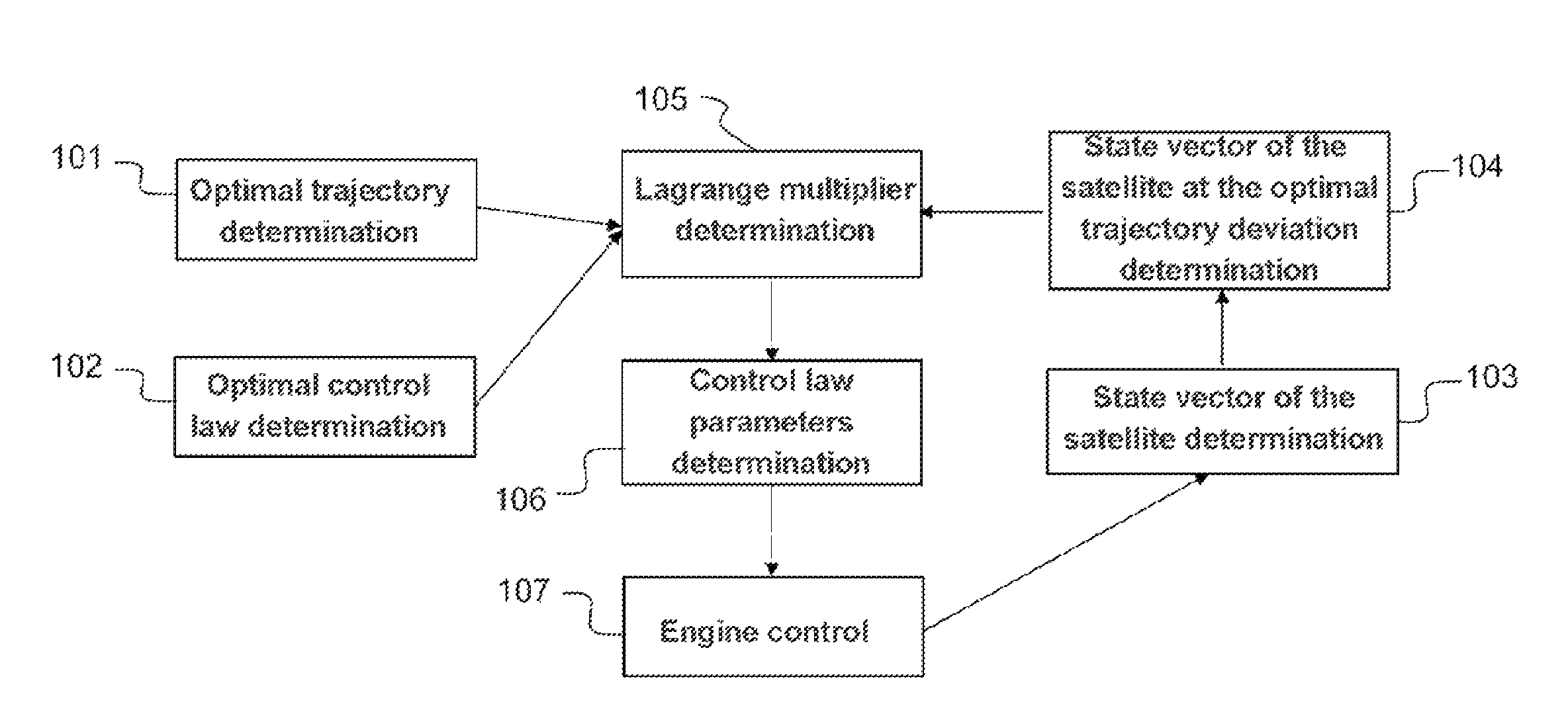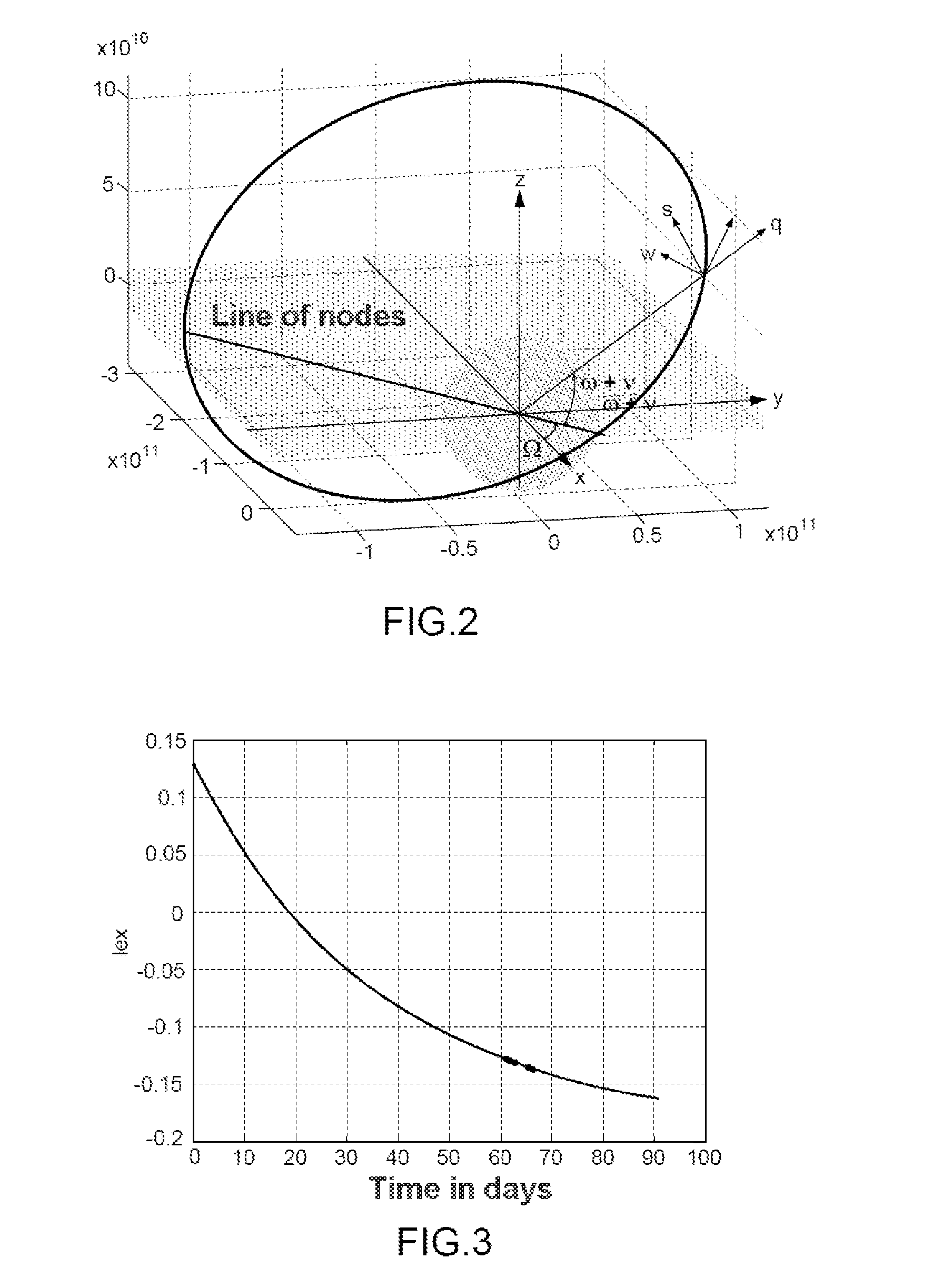Method and system for stationing a satellite
a satellite and orbit transfer technology, applied in the field of satellite stationing or orbit transfer, can solve the problems of low computing power and memory available in the operation of the method, in comparison with the computer resources of current satellites, and achieve the effect of simple computation
- Summary
- Abstract
- Description
- Claims
- Application Information
AI Technical Summary
Benefits of technology
Problems solved by technology
Method used
Image
Examples
Embodiment Construction
[0022]The method, as shown in FIG. 1, can use various models of the spatial evolution of the satellite.
[0023]A first model uses a Cartesian representation. A Cartesian representation is a representation in position and in velocity. This first model uses the following equations:
[0024]ⅆ2r->ⅆt2=-μr->r3+Fmβ->+F->disturbingmⅆmⅆt=-Fg0×Isp
In these equations the various variables represent the following elements:[0025]{right arrow over (r)} vector radius of the satellite in relation to the center of Earth in meters[0026]{right arrow over (β)} vector of the thrust-directing cosines[0027]F engine thrust (F≧0) in Newtons[0028]Isp specific impulse of the engine in seconds[0029]m mass of the satellite in kilograms[0030]μ gravitational constant 3.986005 E+14 m3 / s2 for the Earth[0031]g0 normalized terrestrial acceleration 9,80665 m / s2 [0032]{right arrow over (F)}disturbing set of disturbing forces affecting the trajectory of the satellite in Newtons
[0033]The disturbing forces, acting on the sa...
PUM
 Login to View More
Login to View More Abstract
Description
Claims
Application Information
 Login to View More
Login to View More - R&D
- Intellectual Property
- Life Sciences
- Materials
- Tech Scout
- Unparalleled Data Quality
- Higher Quality Content
- 60% Fewer Hallucinations
Browse by: Latest US Patents, China's latest patents, Technical Efficacy Thesaurus, Application Domain, Technology Topic, Popular Technical Reports.
© 2025 PatSnap. All rights reserved.Legal|Privacy policy|Modern Slavery Act Transparency Statement|Sitemap|About US| Contact US: help@patsnap.com



